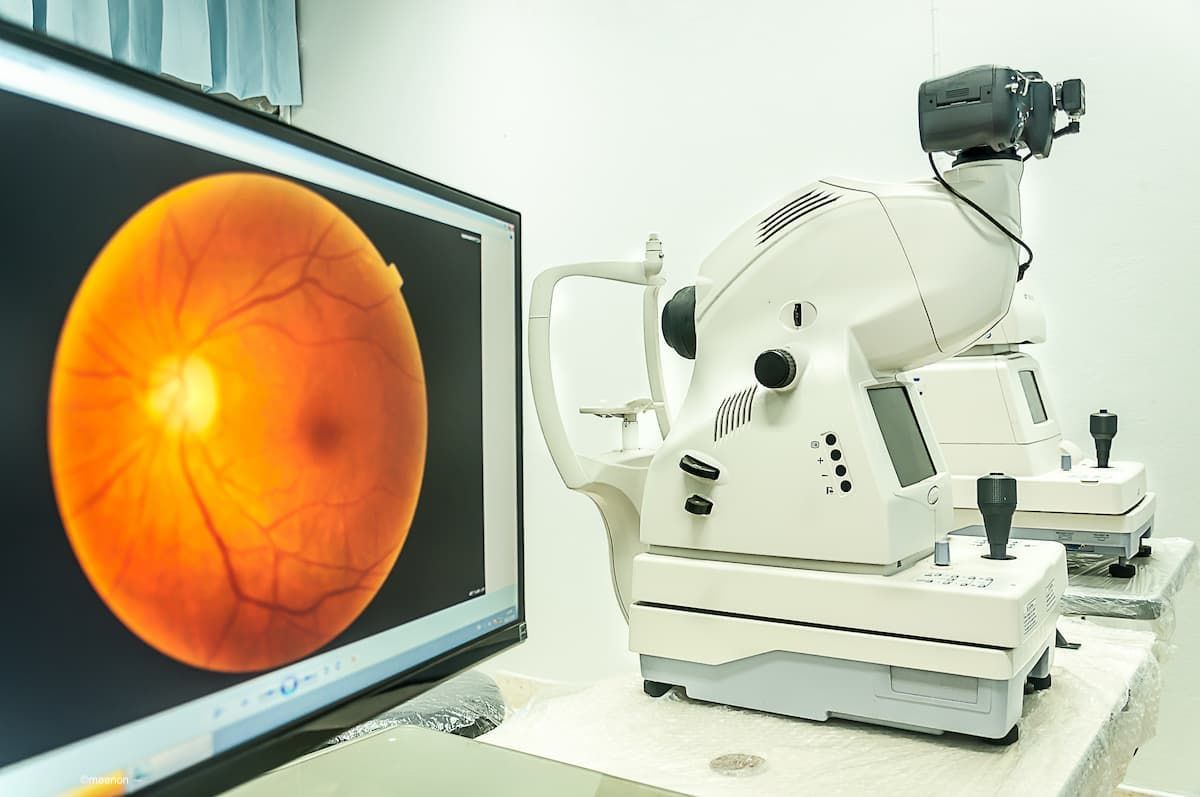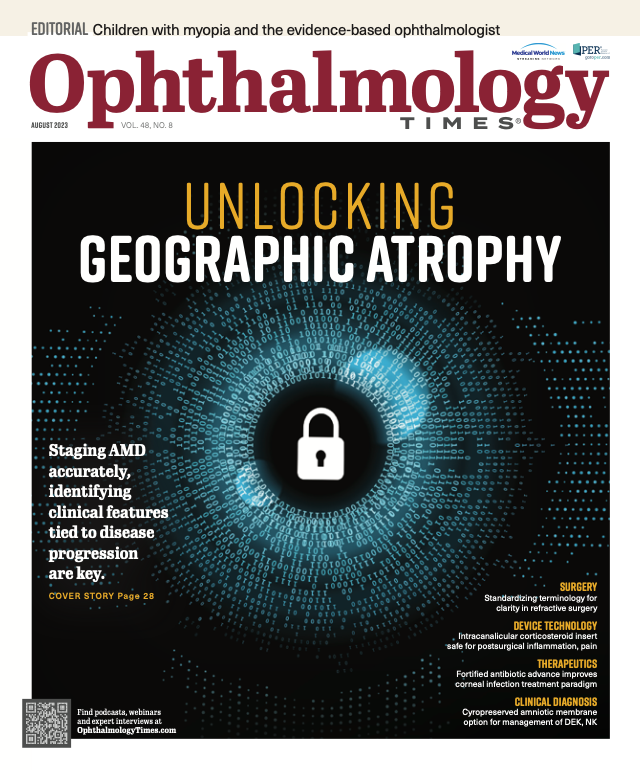- COVID-19
- Biosimilars
- Cataract Therapeutics
- DME
- Gene Therapy
- Workplace
- Ptosis
- Optic Relief
- Imaging
- Geographic Atrophy
- AMD
- Presbyopia
- Ocular Surface Disease
- Practice Management
- Pediatrics
- Surgery
- Therapeutics
- Optometry
- Retina
- Cataract
- Pharmacy
- IOL
- Dry Eye
- Understanding Antibiotic Resistance
- Refractive
- Cornea
- Glaucoma
- OCT
- Ocular Allergy
- Clinical Diagnosis
- Technology
Study detects variance across imaging modalities on sizes of GA areas
Researchers find gray GA lesions had the highest cross-modality differences
(Image Credit: AdobeStock/meenon)

Fundus autofluorescence, a common imaging modality used to assess the retina, may be underreporting the sizes of geographic atrophy across various phenotypic features, according to Noor Chahal, BS, who reported these findings at the 2023 Association for Research in Vision and Ophthalmology Annual Meeting.
Chahal and colleagues compared the results of geographic atrophy (GA) measurements obtained using color fundus photography, fundus autofluorescence, and infrared reflectance. They evaluated the agreement among measurements obtained from the imaging modalities with an emphasis on the relationship with phenotypic GA features.
During the METforMIN clinical trial, Chahal said that he and his colleagues analyzed findings from 170 color fundus photographs, 185 fundus autofluorescence images, and 185 infrared reflectance images. The images were obtained from 128 eyes from 77 patients with GA. Two independent masked graders measured the areas of GA in the images. The fundus autofluorescence images were measured manually and semiautomatically using RegionFinder Software (Heidelberg Engineering Inc).
Images were then stratified based on the GA focality, homogeneity, size, and color to identify any significant differences in measurements between the semiautomatically graded fundus autofluorescence images and the other methods. Homogeneous lesions were defined as GA lesions with homogeneous hypofluorescence on fundus autofluorescence. Conversely, non-homogeneous lesions were defined as GA lesions with mixed hypo- and hyperfluorescence on fundus autofluorescence, Chahal explained.
Results of image comparisons
The measurement results of the areas of GA by modality were as follows: color fundus photographs, 9.18 ± 8.11 mm2; manually measured fundus autofluorescence images, 8.75 ± 7.32 mm2; semiautomatically graded fundus autofluorescence images, 7.02 ± 5.52 mm2; and infrared reflectance images, 8.76 ± 7.37 mm2. The investigators reported that the 4 methods had excellent intergrader agreement (intraclass correlation coefficient, > 0.99) within the same modality. The semiautomatic gradings of the fundus autofluorescence (FAF) images (7.02 ± 5.52mm2) were significantly lower than the color fundus photographs (9.18 ± 8.11mm2, P = .001), manually graded FAF (8.75 ± 7.32mm2, P = .004), and the infrared reflectance (8.76 ± 7.37mm2, P = 0.003) image measurements.
The same relationship was seen in the unifocal, multifocal, and nonhomogeneous GA lesions. However, among the 53 homogeneous GA lesions, the semiautomatically measured autofluorescence results did not differ significantly from those of the fundus photographs (difference, –0.88 ± 1.27 mm2; P = .06), manually measured autofluorescence results (difference, –0.51 ± 0.68 mm2; P = .27), and infrared reflectance results (difference, –0.45 ± 0.71 mm2; P = .21), the authors reported.
In addition, gray GA lesions (n = 5) had the highest cross-modality differences when compared to measurements obtained using semiautomated fundus autofluorescence. The measurements from the fundus photographs showed a difference of –6.29 ± 5.18 mm2. Those from the manual autofluorescence measured, –8.43 ± 1.96 mm2, and from the infrared reflectance measured, –6.41 ± 2.88 mm2.
“Although each method had excellent intergrader agreement, the GA sizes measured semiautomatically on autofluorescence images were significantly lower than in other imaging modalities,” the authors concluded. Finally, they encourage clinicians and researchers to use a single, consistent modality for disease monitoring and progression and to consider GA phenotype when interpreting imaging results.
Noor Chahal, BS
E: noor.chahal@ucsf.edu
Chahal has no financial interests related to this subject matter.
Reference:
Chahal, N; Shen, L L, Kennan, J, et al. Comparison of fundus photography, autofluorescence, and infrared imaging in various phenotypic features of geographic atrophy. Paper presented at: the 2023 Association for Research in Vision and Ophthalmology Annual Meeting; April 22—27, 2023; New Orleans, LA. Accessed May 23, 2023.

